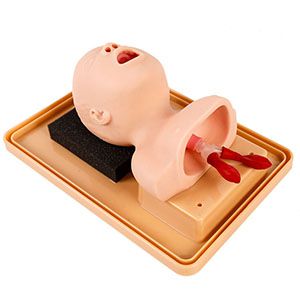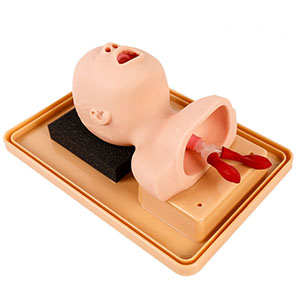
Success in intubation
Article tag: intubation model medical emergency model

In emergency medical treatment, tracheal intubation is a critical and effective life support method. Its successful implementation can often reverse the patient's critical condition and win a valuable time window for subsequent treatment.
...
In emergency medical treatment, tracheal intubation is a critical and effective life support method. Its successful implementation can often reverse the patient's critical condition and win a valuable time window for subsequent treatment.
When faced with sudden acute respiratory failure, severe asphyxia, cardiac arrest, or other conditions resulting in loss of spontaneous breathing, prompt and accurate endotracheal intubation is critical. First, assessing the patient's status is the first step in the process, including level of consciousness, hemodynamic stability, and whether the airway is patent. On this basis, medical staff must quickly decide whether to perform tracheal intubation immediately and prepare necessary equipment, such as endotracheal tube, laryngoscope, assisted ventilation equipment and appropriate anesthetic drugs.

During the actual operation, medical staff must strictly follow the principle of asepsis, use a laryngoscope to clearly expose the glottis, and use skilled techniques to insert the endotracheal tube into the trachea. After confirming the correct position, they must use chest rising and falling, auscultation of both lungs for uniform breath sounds, and Exhaled gas is used to verify the success of intubation through multiple methods such as CO2 monitors. This series of actions requires the operator to have both solid professional theoretical knowledge and rich practical experience to achieve speed and accuracy.
After successful intubation, mechanical ventilation should be started immediately, the appropriate tidal volume, respiratory frequency and inhalation-to-exhalation ratio should be adjusted to maintain blood oxygen saturation within a safe range and prevent the occurrence of hypoxemia. At the same time, changes in the patient's vital signs, especially heart rate, blood pressure, pulse oxygen saturation and other parameters, are closely monitored, and the treatment plan is adjusted at any time based on the patient's response.
It is worth noting that even if tracheal intubation is successful, everything is not ok. Possible complications after surgery, such as airway edema, endotracheal tube-related pneumonia, tracheal injury, etc., require medical staff to be vigilant and promptly intervene. In addition, for patients with special circumstances such as cervical spine injury or elevated intracranial pressure, care should be taken during the operation to minimize unnecessary neck movement to avoid aggravating the original injury.
In short, the successful implementation of tracheal intubation first aid requires not only superb skills and decisive decision-making ability of medical staff, but also humanistic care and careful and meticulous work attitude throughout the entire process, in order to ensure the patient's life safety to the greatest extent and reduce the risk of potential complications. risk.

Marketing Center
Hong Kong, ChinaProduction Base
Shanghai, ChinaProducts
Contact Us
 Address: Hong Kong, China
Address: Hong Kong, China
 Phone:+86 19937901373
Phone:+86 19937901373
 Email:sophia@adahealthy.com
Email:sophia@adahealthy.com
 Mobile:+86-0379-65160607
Mobile:+86-0379-65160607








